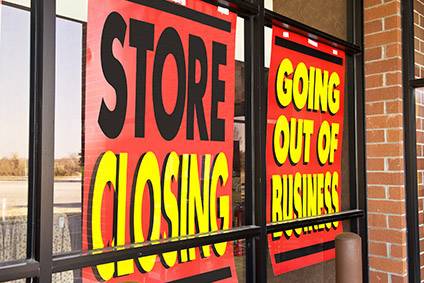Permanent store closures were already rife in the retail sector prior to Covid-19 due to spend shifting online, but this has been further intensified by the pandemic. Apparel stores have been especially hard hit, with online penetration forecast to rise to 50.8% in 2020 and expected to remain well above 2019 levels in 2021 at 40.0%, further reducing the need for large store estates.
As retailers continue to close stores, they must have a strategy for ensuring their customers continue to shop with them online.
Should a branch of a clothing chain close down, 39.5% of consumers surveyed by GlobalData in October say they would switch to shopping online with the same retailer. This falls to 34.4% for footwear due to the greater importance of fit and the popularity of branded items that are available from numerous retailers.
Most fashion retailers have strong online propositions, making it easier for consumers to switch directly to their website. However, one in five clothing shoppers said they would switch to another retailer online if their preferred physical store closed for good, with this rising to 23.3% among footwear shoppers.
Shoppers will be put off sticking with digital laggards, such as Clarks, Marks & Spencer and Peacocks, that do not meet the high consumer expectations of website functionality and delivery speed. These retailers need to exploit their USPs, such as product and customer service, to protect shopper loyalty and should consider partnering with leading online marketplaces such as Asos and Next to boost online sales.
Mid-market retailers are facing the most store closures, and they cannot rely on price credentials to make up for a poorer online offer. It is essential that these retailers invest in their online infrastructure, though existing features such as loyalty schemes could be leveraged to promote spending online. Retailers selling products and brands that are available elsewhere, such as Topshop, will find it harder to migrate shoppers online as they are competing against their third-party distributors with market-leading online propositions and will come under pressure to match promotions.

US Tariffs are shifting - will you react or anticipate?
Don’t let policy changes catch you off guard. Stay proactive with real-time data and expert analysis.
By GlobalDataThe second most common action in the event of a permanent store closure is purchasing from a different retailer’s store, which 31.7% of clothing shoppers would be likely to do for clothing and 33.4% for footwear. Many of these shoppers will be reluctant to purchase apparel online due to wanting to see and try on items first, as well as buying from a location that is convenient for them.
To persuade these shoppers to purchase online, retailers must promote the convenience of shopping online (such as third-party pickup delivery options and free returns), ensure it has high quality and sufficient product imagery and information, and consider fit technologies that help boost shopper trust in ordering the right sizes.





